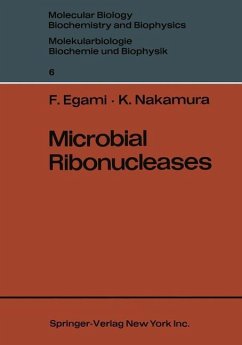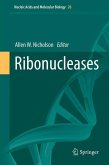Studies on microbial RNases began in 1924 when NOGUCHI found nucleic acid degrading enzymes in Takadiastase, a commercially prepared digest from Aspergillus oryzae. In 1935 OrANI reported the presence of enzymes degrading yeast RNA in fungi (Aspergillus sp. etc.). In 1948, MCCARTY studied the nuclease activity in 36 strains of group A hemolytic Streptococci and indicated the release of both RNase and DNase from Streptococcal cells during growth in culture media. As is well known, these nucleases (TILLETT et al., 1948) are applied in the treatment of inflammatory exudates. In 1952, MUGGLETON and WEBB found RNase in the culture medium of Actinomy ces (strain A), and they suggested that the ability of the medium to render killed Gram-positive cells Gram-negative may be due to the RNase. In the same year PARDEE and his colleagues (1952 a, b) found RNase activity in E. coli (strain B) in fected by bacteriophage T r, T3 etc. 2 KUNINAKA (1954) found ribonuclease in culture @trates of Aspergillus oryzae.
Hinweis: Dieser Artikel kann nur an eine deutsche Lieferadresse ausgeliefert werden.
Hinweis: Dieser Artikel kann nur an eine deutsche Lieferadresse ausgeliefert werden.








